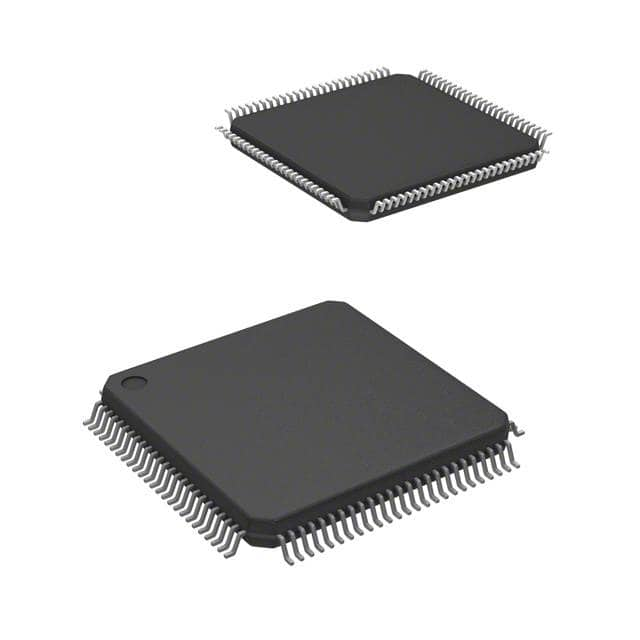Szczegóły produktu można znaleźć w specyfikacjach.

MAX71315ECQ+ - English Editing Encyclopedia Entry
Product Overview
Category
MAX71315ECQ+ belongs to the category of integrated circuits (ICs).
Use
This product is commonly used in electronic devices for power management and battery charging applications.
Characteristics
- Integrated circuit with power management capabilities
- Designed for battery charging applications
- High efficiency and low power consumption
- Compact package size
- Wide input voltage range
- Overvoltage and overcurrent protection features
Package and Quantity
MAX71315ECQ+ is available in a compact quad flat no-lead (QFN) package. The package contains one unit of the IC.
Specifications
- Input Voltage Range: 4.5V to 28V
- Output Voltage Range: 3.3V to 5.5V
- Charging Current: Up to 2A
- Operating Temperature Range: -40°C to +85°C
- Package Type: QFN
- Pin Count: 16
Detailed Pin Configuration
The MAX71315ECQ+ IC has a total of 16 pins, each serving a specific function. The pin configuration is as follows:
- VIN: Input voltage pin
- GND: Ground pin
- VOUT: Output voltage pin
- EN: Enable pin
- PGND: Power ground pin
- BAT: Battery connection pin
- TS: Temperature sense pin
- PROG: Programming pin
- STAT: Status indicator pin
- ISET: Current limit setting pin
- ILIM: Current limit pin
- FB: Feedback pin
- COMP: Compensation pin
- SS: Soft-start pin
- BST: Boost pin
- VCC: Supply voltage pin
Functional Features
- Battery charging with high efficiency
- Overvoltage and overcurrent protection
- Temperature sensing for thermal management
- Programmable current limit
- Soft-start feature for smooth power-up
- Status indicator for charging progress monitoring
Advantages and Disadvantages
Advantages
- High efficiency charging
- Wide input voltage range
- Compact package size
- Overvoltage and overcurrent protection
- Programmable current limit
Disadvantages
- Limited output voltage range (3.3V to 5.5V)
- Requires external components for complete battery charging circuit
Working Principles
The MAX71315ECQ+ IC operates by regulating the charging current and voltage supplied to a connected battery. It utilizes a feedback mechanism to maintain the desired charging parameters. The IC continuously monitors the battery's voltage, temperature, and charging status to ensure safe and efficient charging.
Detailed Application Field Plans
The MAX71315ECQ+ IC finds applications in various electronic devices that require battery charging capabilities. Some of the common application fields include:
- Portable electronic devices (e.g., smartphones, tablets, portable gaming consoles)
- Wearable devices (e.g., smartwatches, fitness trackers)
- IoT devices (e.g., wireless sensors, smart home devices)
- Automotive electronics (e.g., infotainment systems, GPS devices)
Detailed and Complete Alternative Models
- MAX71316ECQ+: Similar to MAX71315ECQ+, but with higher charging current capability (up to 3A).
- MAX71317ECQ+: Similar to MAX71315ECQ+, but with additional features such as battery temperature monitoring and protection.
- MAX71318ECQ+: Similar to MAX71315ECQ+, but with a wider input voltage range (up to 36V).
These alternative models offer similar functionality with slight variations in specifications to cater to different application requirements.
In conclusion, MAX71315ECQ+ is an integrated circuit designed for efficient battery charging in various electronic devices. Its compact size, high efficiency, and protection features make it suitable for a wide range of applications.
Wymień 10 typowych pytań i odpowiedzi związanych z zastosowaniem MAX71315ECQ+ w rozwiązaniach technicznych
Sure! Here are 10 common questions and answers related to the application of MAX71315ECQ+ in technical solutions:
Q: What is the MAX71315ECQ+? A: The MAX71315ECQ+ is a highly integrated power management IC designed for use in portable devices, such as smartphones and tablets.
Q: What are the key features of the MAX71315ECQ+? A: The key features of the MAX71315ECQ+ include multiple voltage regulators, battery charger, fuel gauge, and protection circuitry.
Q: How many voltage regulators does the MAX71315ECQ+ have? A: The MAX71315ECQ+ has three integrated voltage regulators - one for the system, one for the display, and one for the audio subsystem.
Q: Can the MAX71315ECQ+ charge different types of batteries? A: Yes, the MAX71315ECQ+ supports charging of various battery chemistries, including lithium-ion (Li-Ion), lithium-polymer (Li-Po), and nickel-cadmium (Ni-Cd).
Q: Does the MAX71315ECQ+ provide accurate battery capacity measurement? A: Yes, the MAX71315ECQ+ incorporates a fuel gauge that accurately measures the remaining battery capacity, allowing for precise battery life estimation.
Q: Is the MAX71315ECQ+ capable of fast charging? A: Yes, the MAX71315ECQ+ supports fast charging protocols, such as Qualcomm Quick Charge and USB Power Delivery, enabling rapid charging of compatible devices.
Q: Can the MAX71315ECQ+ protect against overvoltage and overcurrent conditions? A: Absolutely, the MAX71315ECQ+ includes built-in protection circuitry to safeguard against overvoltage, overcurrent, and short-circuit events, ensuring safe operation.
Q: Does the MAX71315ECQ+ have any thermal management features? A: Yes, the MAX71315ECQ+ incorporates thermal regulation mechanisms to prevent overheating, thereby enhancing the overall reliability of the system.
Q: Can the MAX71315ECQ+ be used in automotive applications? A: Yes, the MAX71315ECQ+ is suitable for automotive applications, thanks to its wide input voltage range, robust protection features, and compliance with automotive standards.
Q: Are evaluation kits available for the MAX71315ECQ+? A: Yes, Maxim Integrated provides evaluation kits that allow developers to easily test and evaluate the performance of the MAX71315ECQ+ in their specific applications.
Please note that these answers are general and may vary depending on the specific requirements and use cases. It is always recommended to refer to the datasheet and application notes provided by the manufacturer for detailed information.

